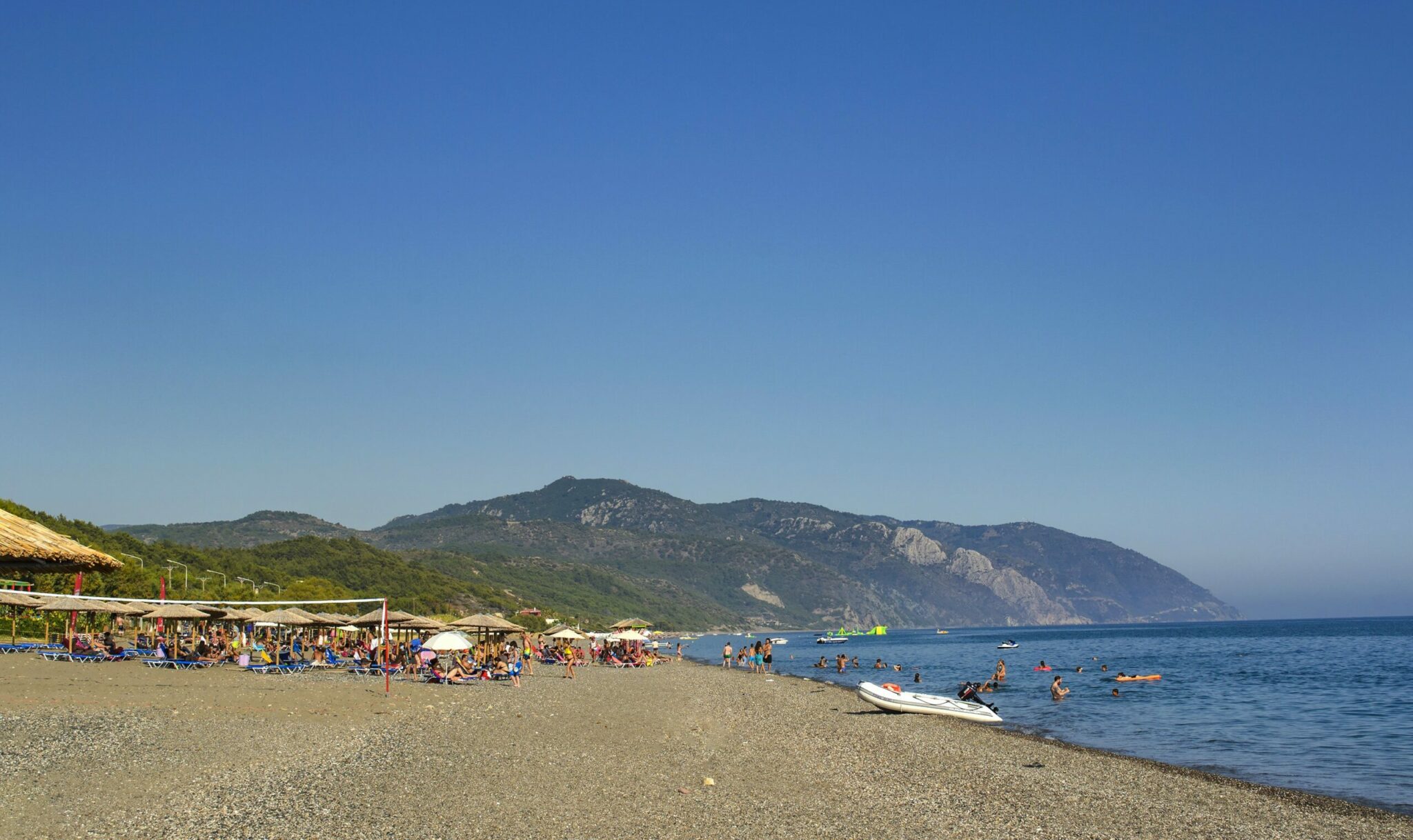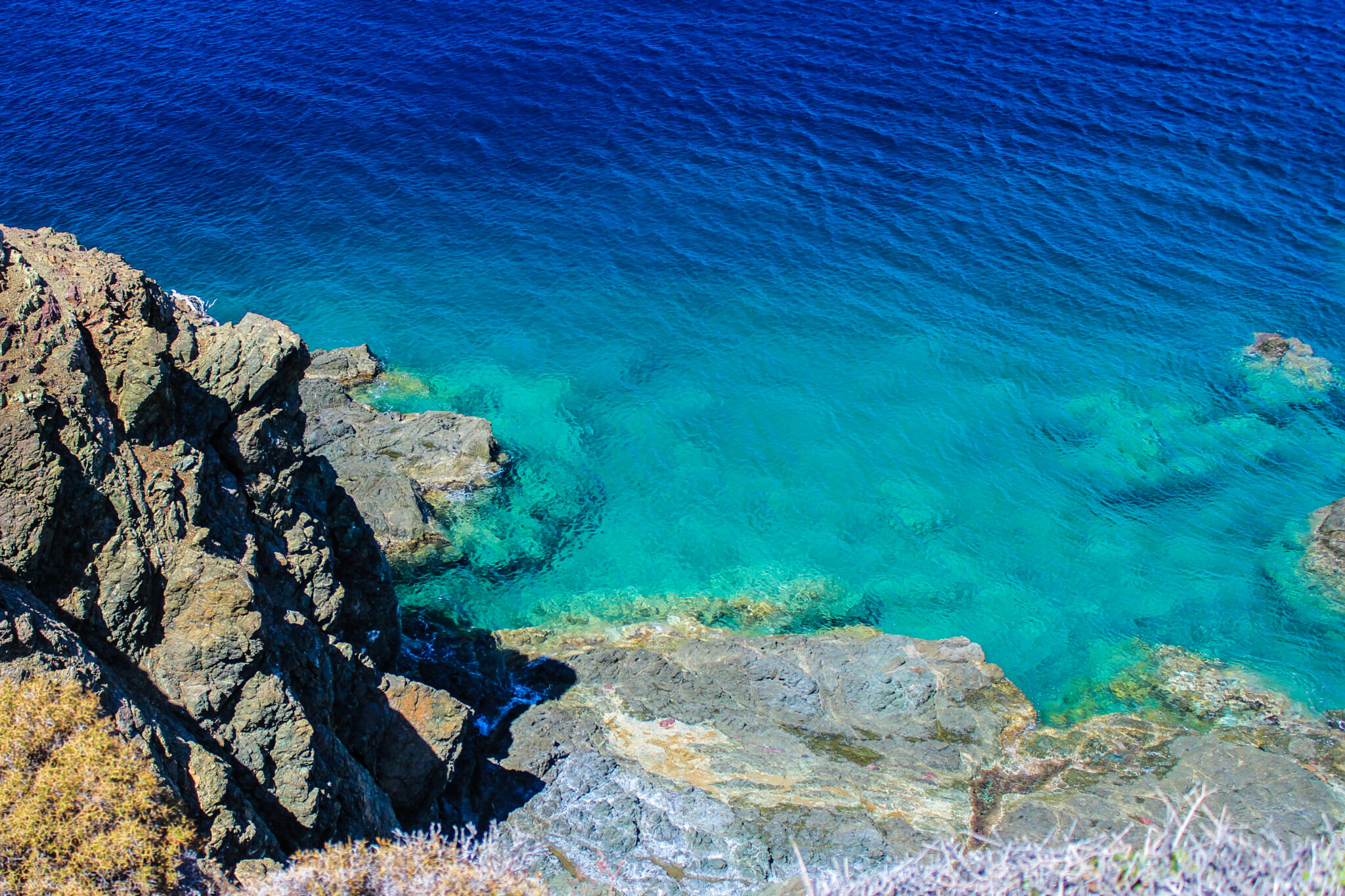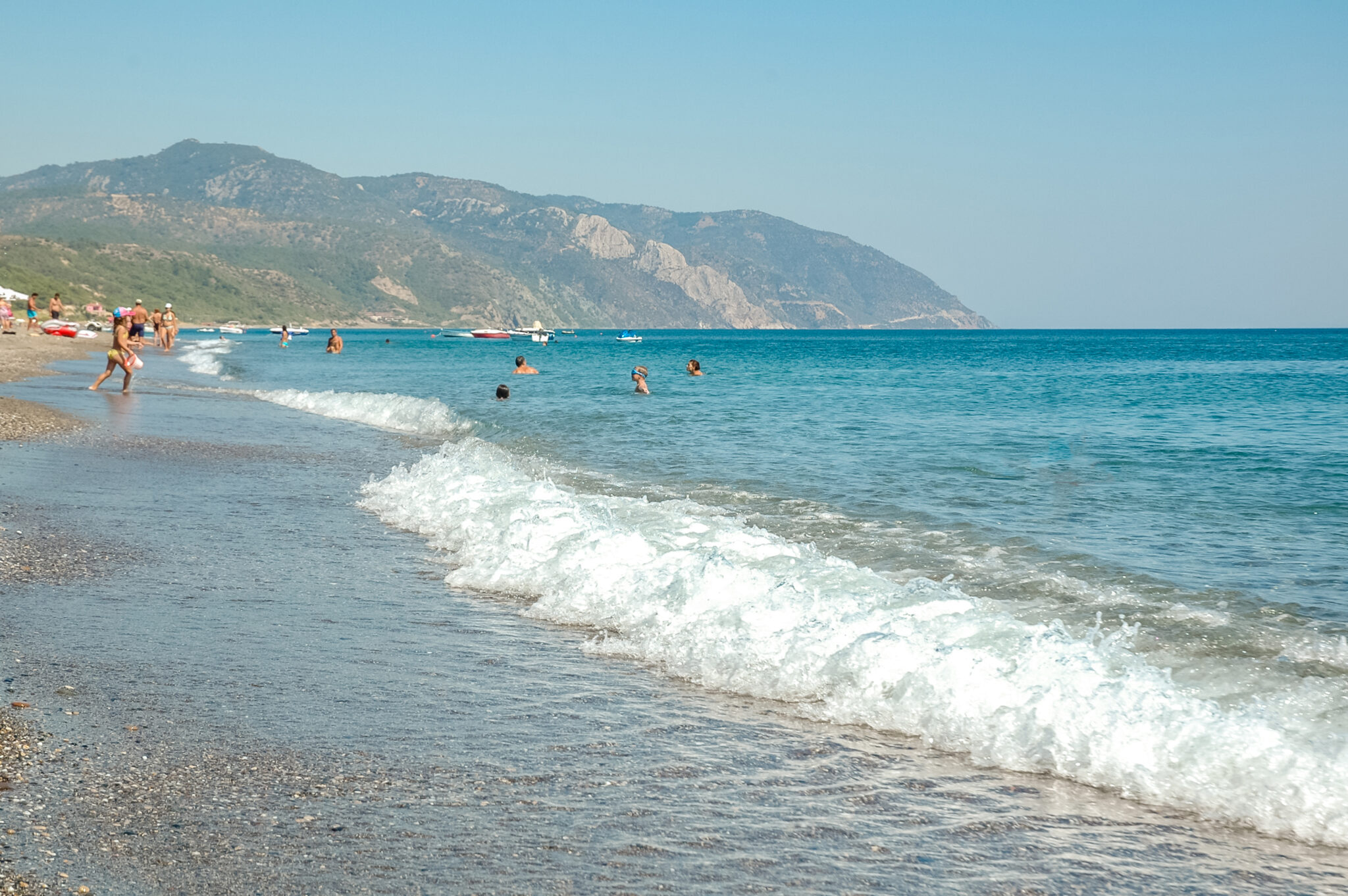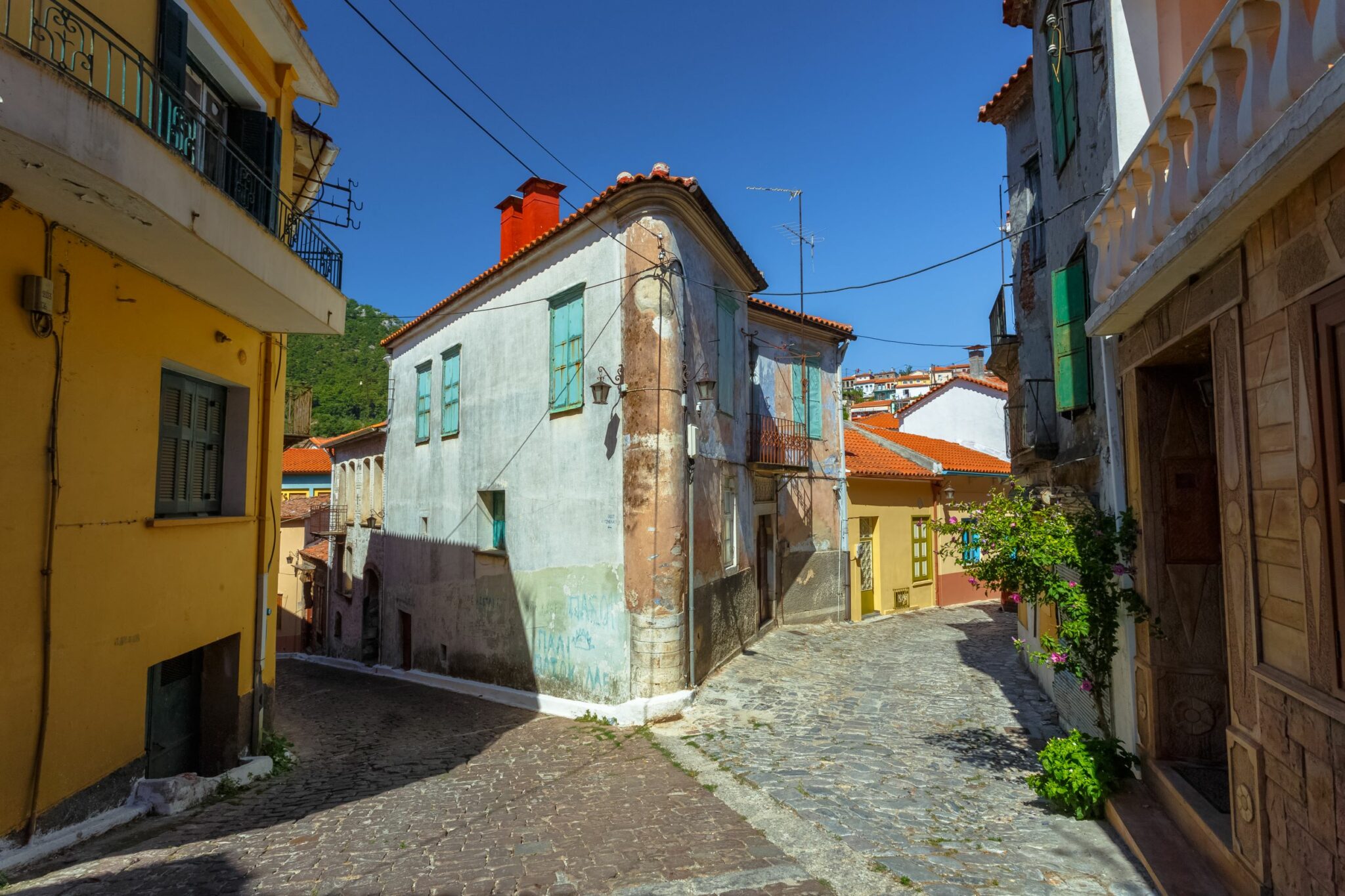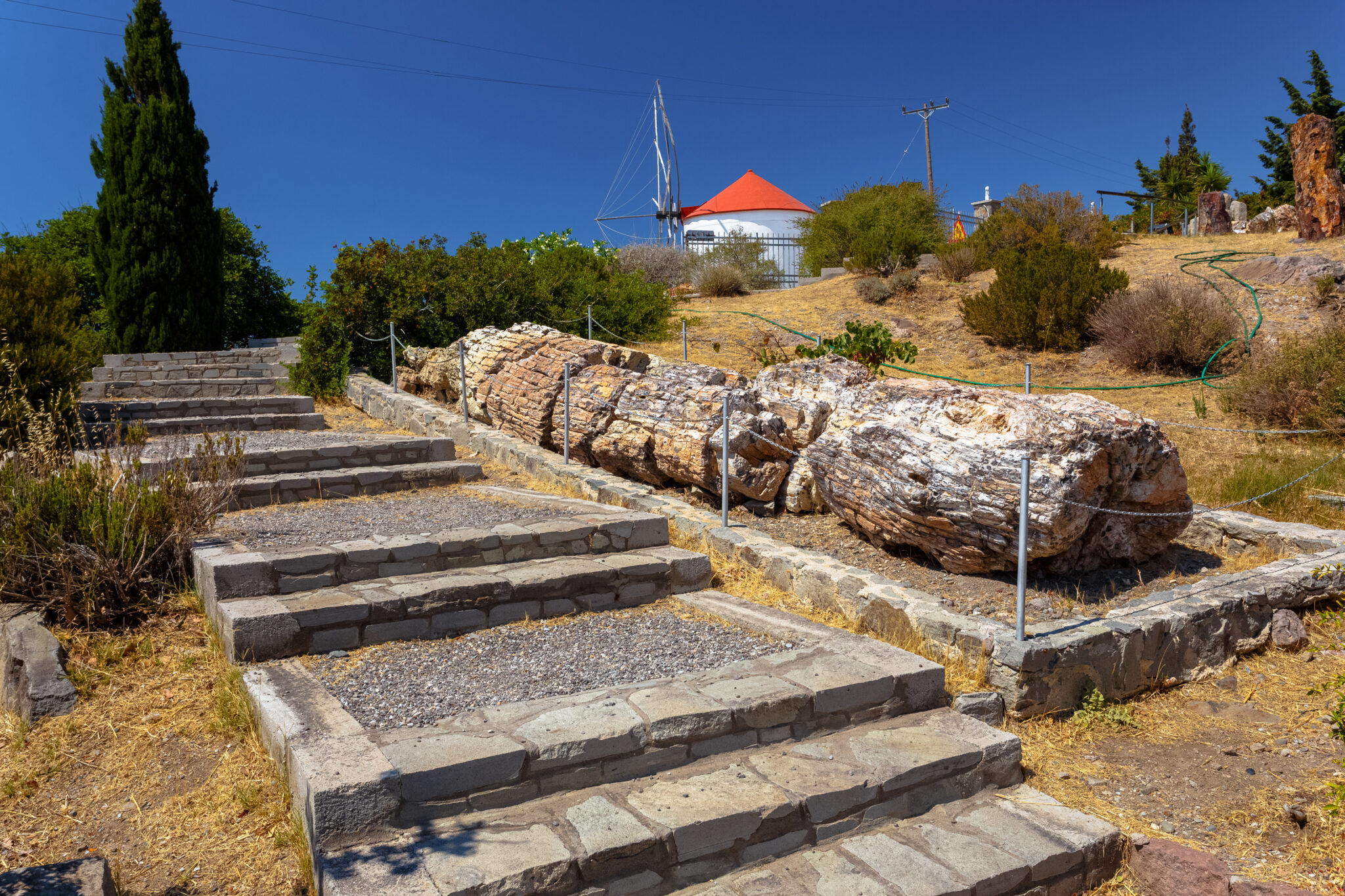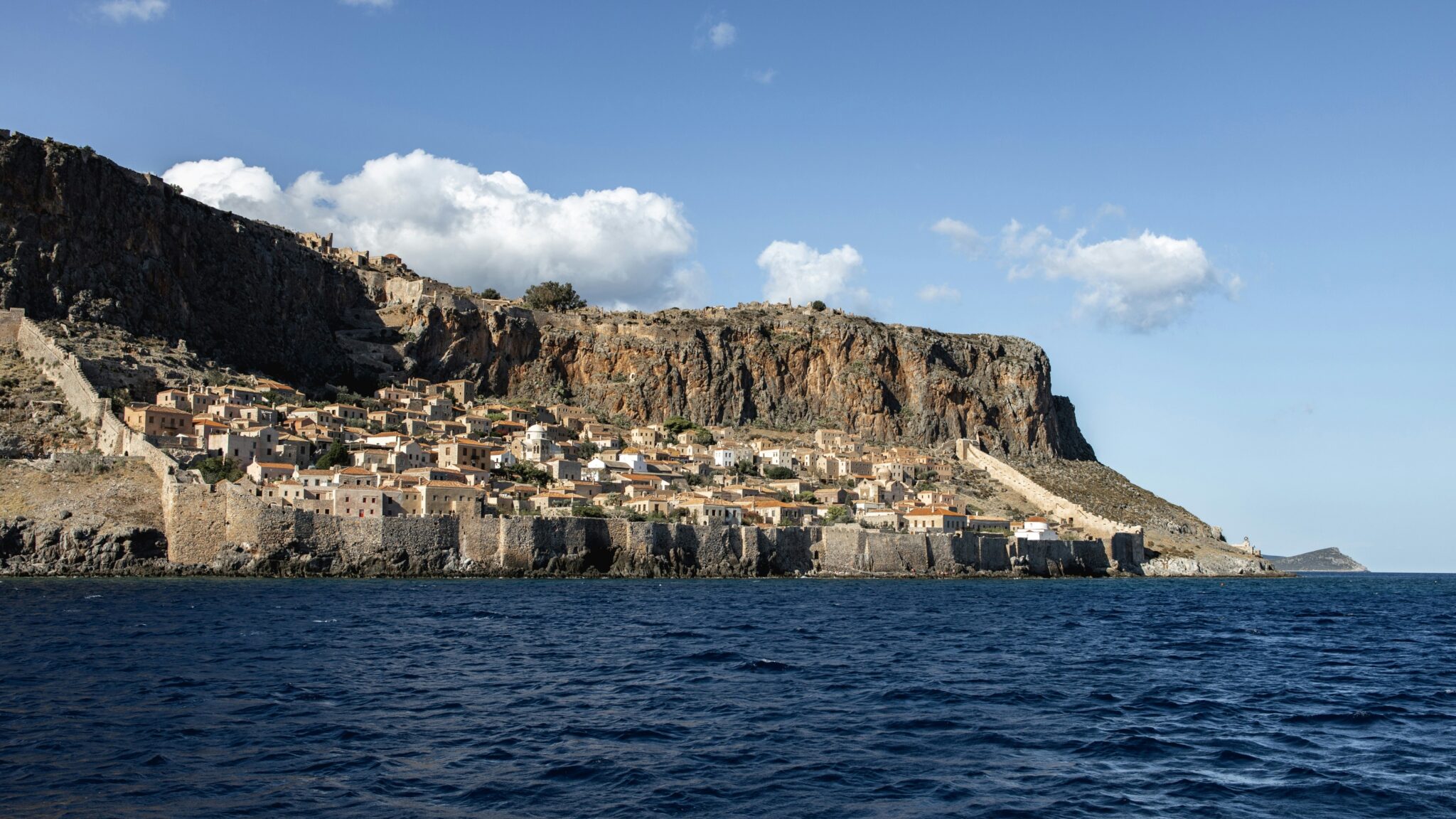If you’re vacationing in Lesvos and are planning to meet friends at Vatera Beach, make sure that you choose a specific meeting point and not a vague “somewhere on the beach” if you intend to find each other. Why? Vatera’s sandy shore stretches for a whopping eight kilometers, making it the longest beach on Lesvos and one of the longest in Greece.
As you may imagine, the beach’s length means visitors can enjoy plenty of space, whether you’re at one of the beach bars or just throwing down your towel onto the sand. One of the loveliest aspects of this beach, especially on hot summer days, are the cool, crystal clear waters that lap its shore. Meanwhile, the easy entry into the water, which gets deep very quickly, will make you want to take several invigorating dives during your visit. The inviting waters of Vatera are known to rouse even the most laid-back vacationers
For those who enjoy underwater exploration, bringing a mask or snorkel along is a must, as the seabed is truly remarkable. Here you can swim among fish and see beautifully colored shells.
In the past, Vatera attracted scientific interest. In 1997, Michalis Dermitzakis, a professor of paleontology, confirmed what local farmers had long suspected: that this part of Lesvos was a paleontological treasure trove. It turns out that Vatera is filled with fossils dated back to around two million years and the late Pleistocene Epoch. Among the finds unearthed were prehistoric horses, mastodons (ancestors of the elephant), and a giant tortoise the size of a small car.
Around two million years ago, Lesvos was not an island. It was connected to the coast of Asia Minor, and the Gulf of Vatera was a shallow subtropical sea. At that time, the environment was partially forested, with meandering rivers that flowed through the area and emptied into the sea. The animals mentioned above died near a river and their remains were carried downstream. Eventually, their remains got lodged, were covered by sediment, and fossilized. When Dermitzakis and his team discovered them, they were relocated to the nearby village of Vrisa. There, the University of Athens set up a branch of the Museum of Palaeontology and Geology dedicated to the region’s paleontological finds. It’s well worth the time and effort to have a look around at what they found.
While on this side of Lesvos, a great way to spend the day is to visit the traditional village of Agiasos after your morning swim at Vatera. A mountainous village at an altitude of 460 meters on the slopes of Mount Olympus, Agiasos lies around 30 kilometers from Vatera (and 27 kilometers from the city of Mytilene). It is known for its interesting architecture, traditional cafes and the warm hospitality of its inhabitants. In the surrounding area there are some wonderful hiking trails to enjoy. You can read more about it here.
Tips and Information for Your Trip to Lesvos
Vatera is located 50 kilometers from the city of Mytilene, 40 kilometers from Kalloni, and 8 kilometers from the village of Polichnitos.
Lesvos is a large island, and having a means of transport is key if you want to properly explore it.
Due to the island’s large size, where you stay in Lesvos will significantly affect your experience of the island. One good idea is to group the places you’d most like to visit based on their geographic location.
In summer, Mytilene has ferry connections to the Turkish coast and Ayvalik. It’s worth visiting this Turkish town with its rich Greek history.
Lesvos is well known for its excellent gastronomy and overall, reasonable prices.
If you’re traveling with children, be sure to visit the Petrified Forest in Sigri, a unique natural phenomenon in Europe and extremely rare worldwide.
Read also:
The North Aegean Island of Lesvos’ 5 Must-Visit Settlements



